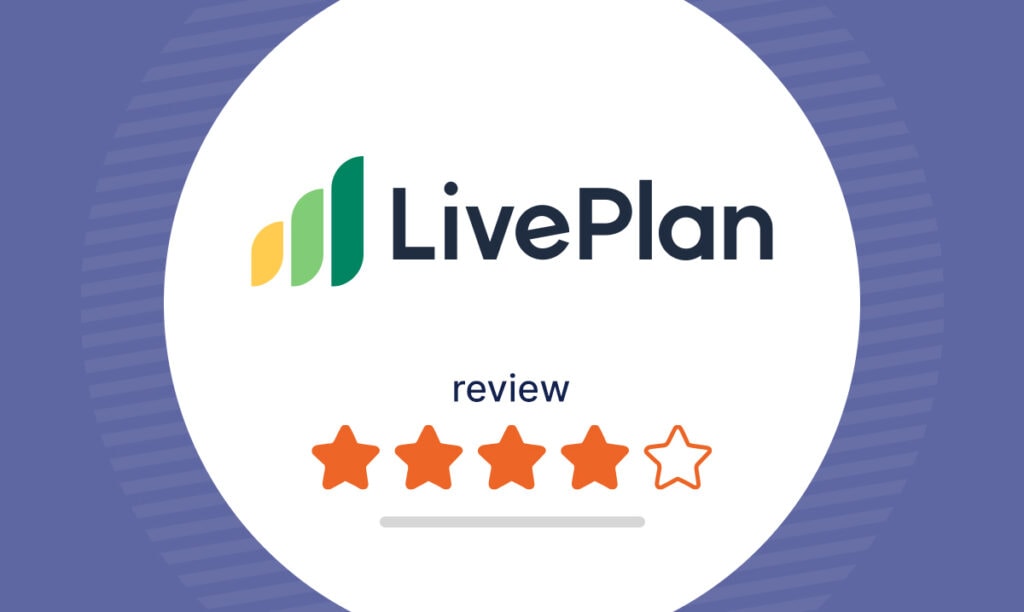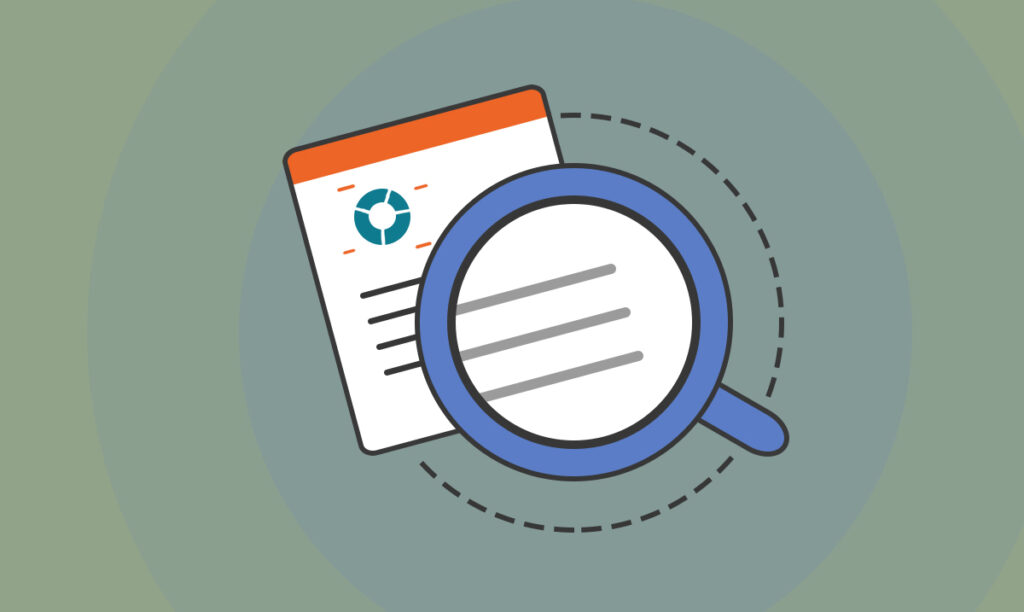In the first segment of our conversation with Vinay Kevadiya, the visionary behind Upmetrics, we explored the platform’s origins and itsunique ...
8 Components of a Business Plan
Written by: Carolyn Young
Carolyn Young is a business writer who focuses on entrepreneurial concepts and the business formation. She has over 25 years of experience in business roles, and has authored several entrepreneurship textbooks.
Edited by: David Lepeska
David has been writing and learning about business, finance and globalization for a quarter-century, starting with a small New York consulting firm in the 1990s.
Published on February 19, 2023

A key part of the business startup process is putting together a business plan, particularly if you’d like to raise capital. It’s not going to be easy, but it’s absolutely essential, and an invaluable learning tool.
Creating a business plan early helps you think through every aspect of your business, from operations and financing to growth and vision. In the end, the knowledge you’ll gain could be the difference between success and failure.
But what exactly does a business plan consist of? There are eight essential components, all of which are detailed in this handy guide.
1. Executive Summary
The executive summary opens your business plan, but it’s the section you’ll write last. It summarizes the key points and highlights the most important aspects of your plan. Often investors and lenders will only read the executive summary; if it doesn’t capture their interest they’ll stop reading, so it’s important to make it as compelling as possible.
The components touched upon should include:
- The business opportunity – what problem are you solving in the market?
- Your idea, meaning the product or service you’re planning to offer, and why it solves the problem in the market better than other solutions.
- The history of the business so far – what have you done to this point? When you’re just getting started, this may be nothing more than coming up with the idea, choosing a business name, and forming a business entity.
- A summary of the industry, market size, your target customers, and the competition.
- A strong statement about how your company is going to stand out in the market – what will be your competitive advantage?
- A list of specific goals that you plan to achieve in the short term, such as developing your product, launching a marketing campaign, or hiring a key person.
- A summary of your financial plan including cost and sales projections and a break-even analysis.
- A summary of your management team, their roles, and the relevant experience that they have to serve in those roles.
- Your “ask”, if applicable, meaning what you’re requesting from the investor or lender. You’ll include the amount you’d like and how it will be spent, such as “We are seeking $50,000 in seed funding to develop our beta product”.
Remember that if you’re seeking capital, the executive summary could make or break your venture. Take your time and make sure it illustrates how your business is unique in the market and why you’ll succeed.
The executive summary should be no more than two pages long, so it’s important to capture the reader’s interest from the start.
2. Company Description/Overview
In this section, you’ll detail your full company history, such as how you came up with the idea for your business and any milestones or achievements.
You’ll also include your mission and vision statements. A mission statement explains what you’d like your business to achieve, its driving force, while a vision statement lays out your long-term plan in terms of growth.
A mission statement might be “Our company aims to make life easier for business owners with intuitive payroll software”, while a vision statement could be “Our objective is to become the go-to comprehensive HR software provider for companies around the globe.”
In this section, you’ll want to list your objectives – specific short-term goals. Examples might include “complete initial product development by ‘date’” or “hire two qualified sales people” or “launch the first version of the product”.
It’s best to divide this section into subsections – company history, mission and vision, and objectives.
3. Products/Services Offered
Here you’ll go into detail about what you’re offering, how it solves a problem in the market, and how it’s unique. Don’t be afraid to share information that is proprietary – investors and lenders are not out to steal your ideas.
Also specify how your product is developed or sourced. Are you manufacturing it or does it require technical development? Are you purchasing a product from a manufacturer or wholesaler?
You’ll also want to specify how you’ll sell your product or service. Will it be a subscription service or a one time purchase? What is your target pricing? On what channels do you plan to sell your product or service, such as online or by direct sales in a store?
Basically, you’re describing what you’re going to sell and how you’ll make money.
4. Market Analysis
The market analysis is where you’re going to spend most of your time because it involves a lot of research. You should divide it into four sections.
Industry analysis
You’ll want to find out exactly what’s happening in your industry, such as its growth rate, market size, and any specific trends that are occurring. Where is the industry predicted to be in 10 years? Cite your sources where you can by providing links.
Then describe your company’s place in the market. Is your product going to fit a certain niche? Is there a sub-industry your company will fit within? How will you keep up with industry changes?
Competitor analysis
Now you’ll dig into your competition. Detail your main competitors and how they differentiate themselves in the market. For example, one competitor may advertise convenience while another may tout superior quality. Also highlight your competitors’ weaknesses.
Next, describe how you’ll stand out. Detail your competitive advantages and how you’ll sustain them. This section is extremely important and will be a focus for investors and lenders.
Target market analysis
Here you’ll describe your target market and whether it’s different from your competitors’. For example, maybe you have a younger demographic in mind?
You’ll need to know more about your target market than demographics, though. You’ll want to explain the needs and wants of your ideal customers, how your offering solves their problem, and why they will choose your company.
You should also lay out where you’ll find them, where to place your marketing and where to sell your products. Learning this kind of detail requires going to the source – your potential customers. You can do online surveys or even in-person focus groups.
Your goal will be to uncover as much about these people as possible. When you start selling, you’ll want to keep learning about your customers. You may end up selling to a different target market than you originally thought, which could lead to a marketing shift.
SWOT analysis
SWOT stands for strengths, weaknesses, opportunities, and threats, and it’s one of the more common and helpful business planning tools.
First describe all the specific strengths of your company, such as the quality of your product or some unique feature, such as the experience of your management team. Talk about the elements that will make your company successful.
Next, acknowledge and explore possible weaknesses. You can’t say “none”, because no company is perfect, especially at the start. Maybe you lack funds or face a massive competitor. Whatever it is, detail how you will surmount this hurdle.
Next, talk about the opportunities your company has in the market. Perhaps you’re going to target an underserved segment, or have a technology plan that will help you surge past the competition.
Finally, examine potential threats. It could be a competitor that might try to replicate your product or rapidly advancing technology in your industry. Again, discuss your plans to handle such threats if they come to pass.
5. Marketing and Sales Strategies
Now it’s time to explain how you’re going to find potential customers and convert them into paying customers.
Marketing and advertising plan
When you did your target market analysis, you should have learned a lot about your potential customers, including where to find them. This should help you determine where to advertise.
Maybe you found that your target customers favor TikTok over Instagram and decided to spend more marketing dollars on TikTok. Detail all the marketing channels you plan to use and why.
Your target market analysis should also have given you information about what kind of message will resonate with your target customers. You should understand their needs and wants and how your product solves their problem, then convey that in your marketing.
Start by creating a value proposition, which should be no more than two sentences long and answer the following questions:
- What are you offering
- Whose problem does it solve
- What problem does it solve
- What benefits does it provide
- How is it better than competitor products
An example might be “Payroll software that will handle all the payroll needs of small business owners, making life easier for less.”
Whatever your value proposition, it should be at the heart of all of your marketing.
Sales strategy and tactics
Your sales strategy is a vision to persuade customers to buy, including where you’ll sell and how. For example, you may plan to sell only on your own website, or you may sell from both a physical location and online. On the other hand, you may have a sales team that will make direct sales calls to potential customers, which is more common in business-to-business sales.
Sales tactics are more about how you’re going to get them to buy after they reach your sales channel. Even when selling online, you need something on your site that’s going to get them to go from a site visitor to a paying customer.
By the same token, if you’re going to have a sales team making direct sales, what message are they going to deliver that will entice a sale? It’s best for sales tactics to focus on the customer’s pain point and what value you’re bringing to the table, rather than being aggressively promotional about the greatness of your product and your business.
Pricing strategy
Pricing is not an exact science and should depend on several factors. First, consider how you want your product or service to be perceived in the market. If your differentiator is to be the lowest price, position your company as the “discount” option. Think Walmart, and price your products lower than the competition.
If, on the other hand, you want to be the Mercedes of the market, then you’ll position your product as the luxury option. Of course you’ll have to back this up with superior quality, but being the luxury option allows you to command higher prices.
You can, of course, fall somewhere in the middle, but the point is that pricing is a matter of perception. How you position your product in the market compared to the competition is a big factor in determining your price.
Of course, you’ll have to consider your costs, as well as competitor prices. Obviously, your prices must cover your costs and allow you to make a good profit margin.
Whatever pricing strategy you choose, you’ll justify it in this section of your plan.
6. Operations and Management
This section is the real nuts and bolts of your business – how it operates on a day-to-day basis and who is operating it. Again, this section should be divided into subsections.
Operational plan
Your plan of operations should be specific, detailed and mainly logistical. Who will be doing what on a daily, weekly, and monthly basis? How will the business be managed and how will quality be assured? Be sure to detail your suppliers and how and when you’ll order raw materials.
This should also include the roles that will be filled and the various processes that will be part of everyday business operations. Just consider all the critical functions that must be handled for your business to be able to operate on an ongoing basis.
Technology plan
If your product involves technical development, you’ll describe your tech development plan with specific goals and milestones. The plan will also include how many people will be working on this development, and what needs to be done for goals to be met.
If your company is not a technology company, you’ll describe what technologies you plan to use to run your business or make your business more efficient. It could be process automation software, payroll software, or just laptops and tablets for your staff.
Management and organizational structure
Now you’ll describe who’s running the show. It may be just you when you’re starting out, so you’ll detail what your role will be and summarize your background. You’ll also go into detail about any managers that you plan to hire and when that will occur.
Essentially, you’re explaining your management structure and detailing why your strategy will enable smooth and efficient operations.
Ideally, at some point, you’ll have an organizational structure that is a hierarchy of your staff. Describe what you envision your organizational structure to be.
Personnel plan
Detail who you’ve hired or plan to hire and for which roles. For example, you might have a developer, two sales people, and one customer service representative.
Describe each role and what qualifications are needed to perform those roles.
7. Financial Plan
Now, you’ll enter the dreaded world of finance. Many entrepreneurs struggle with this part, so you might want to engage a financial professional to help you. A financial plan has five key elements.
Startup Costs
Detail in a spreadsheet every cost you’ll incur before you open your doors. This should determine how much capital you’ll need to launch your business.
Financial projections
Creating financial projections, like many facets of business, is not an exact science. If your company has no history, financial projections can only be an educated guess.
First, come up with realistic sales projections. How much do you expect to sell each month? Lay out at least three years of sales projections, detailing monthly sales growth for the first year, then annually thereafter.
Calculate your monthly costs, keeping in mind that some costs will grow along with sales.
Once you have your numbers projected and calculated, use them to create these three key financial statements:
- Profit and Loss Statement, also known as an income statement. This shows projected revenue and lists all costs, which are then deducted to show net profit or loss.
- Cash Flow Statement. This shows how much cash you have on hand at any given time. It will have a starting balance, projections of cash coming in, and cash going out, which will be used to calculate cash on hand at the end of the reporting period.
- Balance Sheet. This shows the net worth of the business, which is the assets of the business minus debts. Assets include equipment, cash, accounts receivables, inventory, and more. Debts include outstanding loan balances and accounts payable.
You’ll need monthly projected versions of each statement for the first year, then annual projections for the following two years.
Break-even analysis
The break-even point for your business is when costs and revenue are equal. Most startups operate at a loss for a period of time before they break even and start to make a profit. Your break-even analysis will project when your break-even point will occur, and will be informed by your profit and loss statement.
Funding requirements and sources
Lay out the funding you’ll need, when, and where you’ll get it. You’ll also explain what those funds will be used for at various points. If you’re in a high growth industry that can attract investors, you’ll likely need various rounds of funding to launch and grow.
Key performance indicators (KPIs)
KPIs measure your company’s performance and can determine success. Many entrepreneurs only focus on the bottom line, but measuring specific KPIs helps find areas of improvement. Every business has certain crucial metrics.
If you sell only online, one of your key metrics might be your visitor conversion rate. You might do an analysis to learn why just one out of ten site visitors makes a purchase.
Perhaps the purchase process is too complicated or your product descriptions are vague. The point is, learning why your conversion rate is low gives you a chance to improve it and boost sales.
8. Appendices
In the appendices, you can attach documents such as manager resumes or any other documents that support your business plan.
In Closing
As you can see, a business plan has many components, so it’s not an afternoon project. It will likely take you several weeks and a great deal of work to complete. Unless you’re a finance guru, you may also want some help from a financial professional.
Keep in mind that for a small business owner, there may be no better learning experience than writing a detailed and compelling business plan. It shouldn’t be viewed as a hassle, but as an opportunity!
Subscribe to Our Newsletter
and gain insider access to cutting-edge business insights and trends.
Featured Resources

Crafting the Perfect Business Plan: A Deep Dive with Upmetrics’ Vinay Kevadiya
Published on October 13, 2023
Read Now

LivePlan Software Review: Features, Cost, Pros & Cons
Published on September 15, 2023
When you’re starting a business, a business plan is essential whether you’re going to obtain financing or not. Creating a business plan helpsyou ...
Read Now

What to Include in Your Business Plan Appendix?
Published on September 13, 2023
Launching a business involves countless tasks, and one of the crucial early hurdles is writing a business plan. Many entrepreneurs who aren’tlooki ...
Read Now
Comments